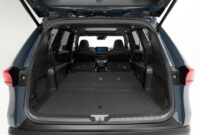The General Directorate of Traffic has published the balance of accidents for 2022 and the figures are not good. Compared to 2019, the reference year with which the comparisons are made, mobility has increased by 3% and so have fatalities (-4%); only the number of wounded has been reduced (-10%). These data have served for the National Confederation of Driving Schools (CNAE) to recover the request that it made to the DGT a few months ago: Strengthen the training of future drivers.
At that time, the CNAE proposed adding a course, compulsory and verifiable by the examiner, for students who are obtaining their driver’s license in places where it is difficult or, materially, impossible to access back roads during the test drive. In this way, it would be possible to prove that the applicant is fully capable of driving on secondary roads. The 2022 figures support his claim.
73% of the deceased, on conventional roads
In 2022, there were 439.8 million long-distance journeys (3% more than in 2019) and 1,145 people lost their lives in accidents that took place on an interurban road: there are 44 more than in 2019, that is, an increase of 4%. However, it is a provisional figure because only those who died in the first 24 hours after the incident have been taken into account. The number of seriously injured was 4,008, 425 fewer (-10%).
73% of the deaths were registered in accidents that occurred on a conventional highway: We are talking about three out of four losses. This is the starting point of the latest CNAE request, which once again focuses on improving driver training: specifically, they ask that aspiring drivers drive a minimum number of kilometers on secondary roads.
A minimum number of kilometers
The driving schools recall that the current Traffic Law offers the possibility of creating awareness modules that the DGT could incorporate into the practical teaching that it imparts to future drivers. The CNAE believes that “it is necessary to know how to drive safely on the most dangerous roads, which are conventional roads”. And they are also aware that “in many places, students do not drive on a secondary road until they obtain their permit because they are not asked for it in the exam to get it out.”
Therefore, from his point of view, “Traffic should demand a minimum number of kilometers of circulation on this type of road. The CNAE has proposed various formulas to remedy the aforementioned shortcoming where the practical test cannot physically take place along a secondary road”. And it is that, at the time, the driving schools warned that “no one should get a driving license without knowing how to drive on the most demanding roads from the point of view of road safety. It is a mistake that can have serious consequences.”





